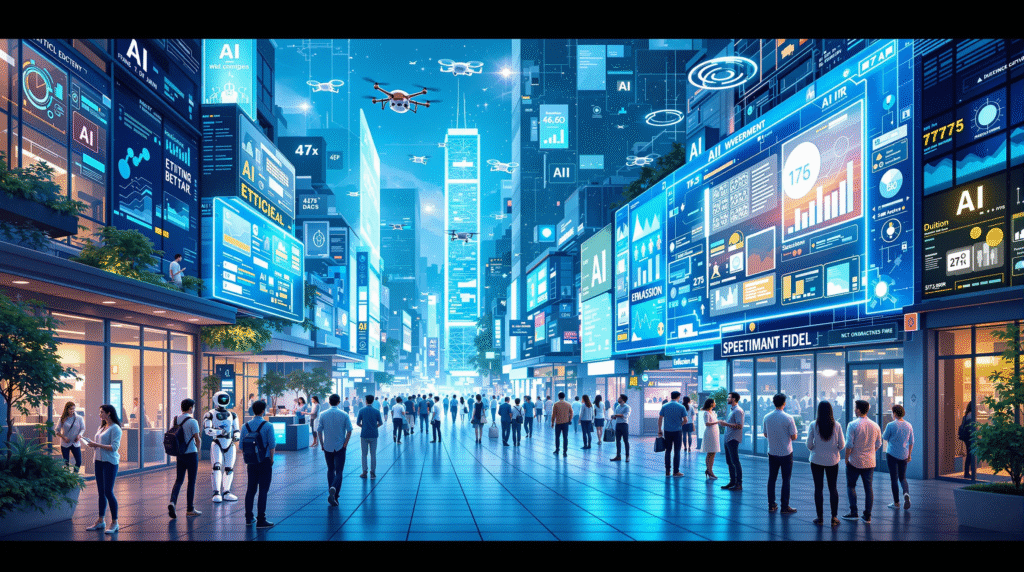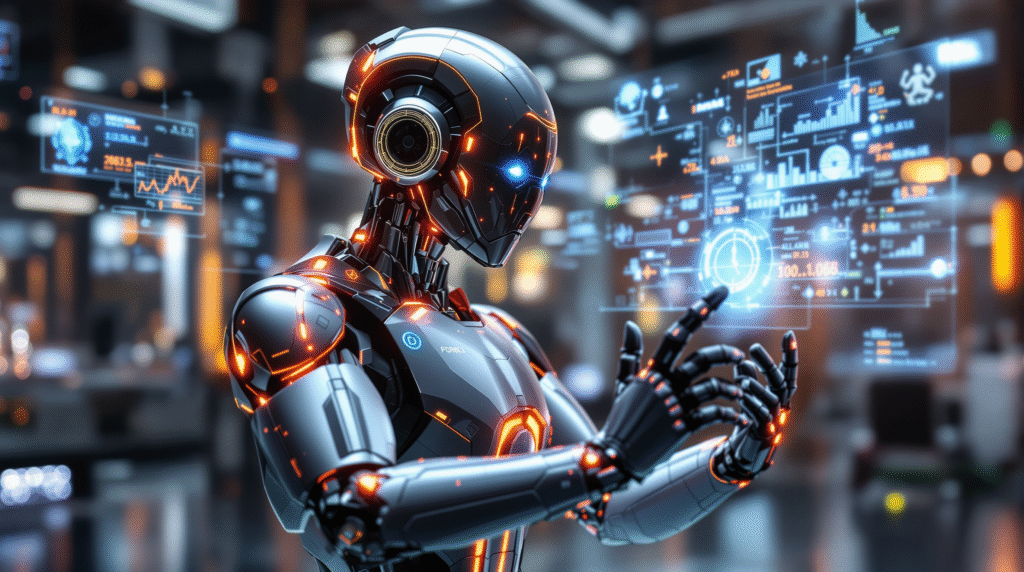Introduction: The Rise of Intelligent Agents
Artificial intelligence has rapidly evolved from a futuristic concept into a practical force that is reshaping our daily lives and the way organizations operate. At the heart of this transformation are intelligent agents—autonomous systems capable of perceiving their environment, making decisions, and taking actions to achieve specific goals. These agents are no longer confined to research labs or science fiction; they are present in smartphones, online services, smart homes, and even in the cars we drive.
The rise of intelligent agents is driven by advances in machine learning, natural language processing, and data analytics. As these technologies mature, intelligent agents are becoming more capable, adaptive, and accessible. They are not only automating routine tasks but also supporting complex decision-making, personalizing user experiences, and enabling entirely new business models. This marks a new era in which artificial intelligence is not just a tool, but an active participant in shaping our world.
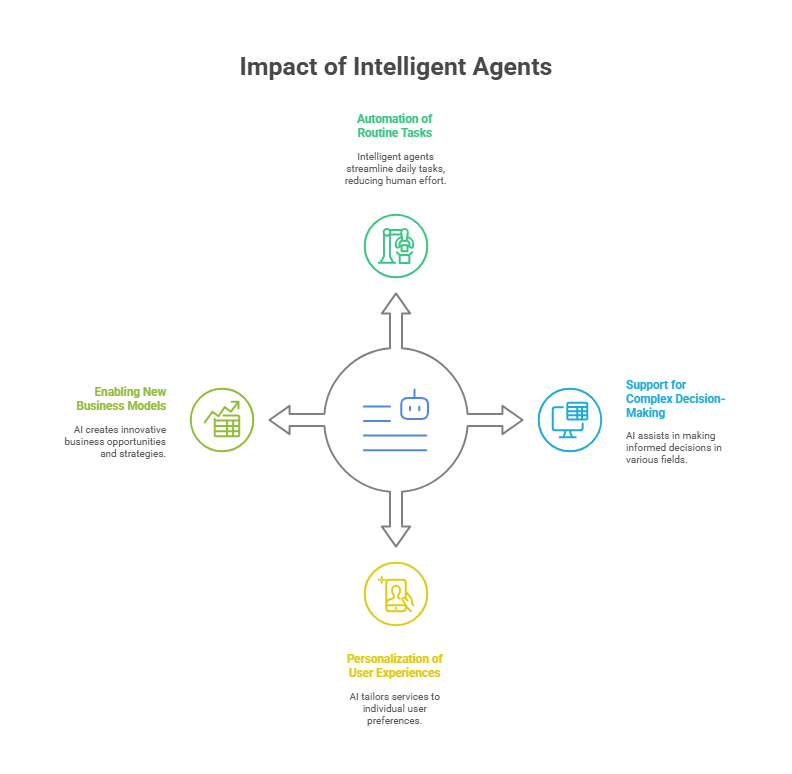
What Are Intelligent Agents? Definitions and Key Concepts
An intelligent agent is a system that can autonomously perceive its environment, process information, and act in pursuit of defined objectives. Unlike traditional software, which follows predetermined instructions, intelligent agents can learn from data, adapt to changing conditions, and make decisions based on context.
Key characteristics of intelligent agents include autonomy, meaning they operate without constant human intervention; reactivity, as they respond to changes in their environment; proactivity, since they can take initiative to achieve their goals; and social ability, which allows them to communicate and collaborate with humans or other agents.
Intelligent agents come in many forms, from simple chatbots that answer customer queries to sophisticated systems managing supply chains or diagnosing medical conditions. They can be embodied, like robots, or exist purely in software, such as virtual assistants. What unites them is their ability to sense, reason, and act—making them a cornerstone of the ongoing AI revolution.
The Evolution of Artificial Intelligence: From Rules to Learning
The journey of artificial intelligence has been marked by significant milestones, each bringing us closer to the intelligent agents we know today. In the early days, AI systems relied on rule-based programming, where experts defined explicit instructions for every possible scenario. These systems could perform well in narrow, predictable environments, but they struggled with complexity and change.
The real breakthrough came with the advent of machine learning, which allowed computers to learn patterns from data rather than relying solely on predefined rules. Algorithms such as decision trees, support vector machines, and, later, neural networks enabled AI systems to recognize speech, classify images, and make predictions with increasing accuracy. The rise of deep learning—a subset of machine learning that uses multi-layered neural networks—further accelerated progress, powering advances in natural language processing, computer vision, and generative AI.
Today’s intelligent agents combine these learning techniques with vast amounts of data and computational power. They can adapt to new situations, improve over time, and even generate creative solutions to complex problems. This evolution from rigid rule-followers to adaptive learners has made AI agents far more versatile and valuable, opening the door to applications that were once unimaginable.
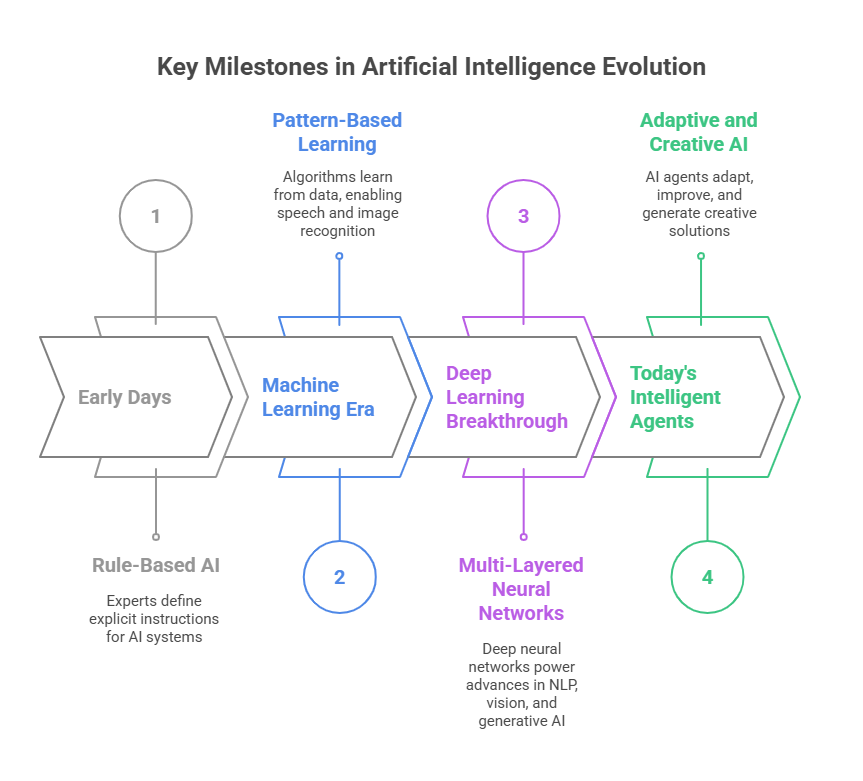
Real-World Applications: Intelligent Agents in Everyday Life
Intelligent agents have moved beyond the realm of theory and are now an integral part of our daily routines. In the digital world, virtual assistants like Siri, Alexa, and Google Assistant help users manage schedules, answer questions, and control smart devices with simple voice commands. Recommendation systems on streaming platforms and online stores analyze user preferences to suggest movies, music, or products tailored to individual tastes.
In transportation, intelligent agents power navigation apps that optimize routes in real time, and they are at the core of autonomous vehicles, making split-second decisions to ensure safety and efficiency. In healthcare, AI agents assist doctors by analyzing medical images, predicting patient risks, and even supporting personalized treatment plans.
Businesses use intelligent agents to automate customer service through chatbots, streamline supply chains, and detect fraud in financial transactions. In smart homes, agents manage energy consumption, enhance security, and create comfortable living environments by learning the habits of residents.
These examples illustrate how intelligent agents are quietly transforming the way we live and work, making technology more responsive, efficient, and personalized than ever before.
Transforming Industries: Business, Healthcare, and Beyond
Intelligent agents are not just enhancing individual experiences—they are fundamentally transforming entire industries. In business, AI agents automate repetitive tasks, analyze vast datasets, and provide actionable insights that drive strategic decisions. For example, in finance, intelligent agents monitor transactions in real time to detect fraud, assess credit risk, and optimize investment portfolios. In retail, they personalize marketing campaigns, manage inventory, and predict consumer trends, helping companies stay competitive in a rapidly changing market.
Healthcare is another sector experiencing a revolution thanks to intelligent agents. AI-powered diagnostic tools analyze medical images with remarkable accuracy, often matching or surpassing human experts. Virtual health assistants support patients by answering questions, scheduling appointments, and reminding them to take medications. Intelligent agents also help hospitals optimize resource allocation, predict patient admissions, and streamline administrative processes, ultimately improving patient care and reducing costs.
Beyond business and healthcare, intelligent agents are making an impact in education, where adaptive learning platforms tailor lessons to individual students’ needs, and in manufacturing, where smart robots collaborate with humans on complex assembly lines. Even agriculture benefits, as AI agents monitor crop health, predict yields, and optimize irrigation. These examples show that intelligent agents are not limited to one field—they are versatile tools driving innovation and efficiency across the entire economy.
The Human-AI Collaboration: Opportunities and Challenges
As intelligent agents become more capable, the nature of work and human collaboration is evolving. Rather than replacing people, many AI agents are designed to augment human abilities, handling routine or data-intensive tasks so that employees can focus on creativity, problem-solving, and relationship-building. For instance, in customer service, chatbots handle common inquiries, while human agents address more complex or sensitive issues. In research and development, AI systems analyze scientific literature and suggest new hypotheses, accelerating the pace of discovery.
However, this collaboration also brings challenges. There are concerns about job displacement, as automation changes the skills required in the workforce. Organizations must invest in reskilling and upskilling employees to ensure they can work effectively alongside AI agents. Trust is another critical factor—users need to understand how intelligent agents make decisions and be confident in their reliability and fairness.
Ethical considerations also come into play, especially when AI agents are involved in sensitive areas like healthcare, law, or finance. Ensuring transparency, accountability, and respect for privacy is essential to building a productive partnership between humans and intelligent agents. Ultimately, the most successful organizations will be those that harness the strengths of both people and AI, creating teams where each complements the other’s abilities.
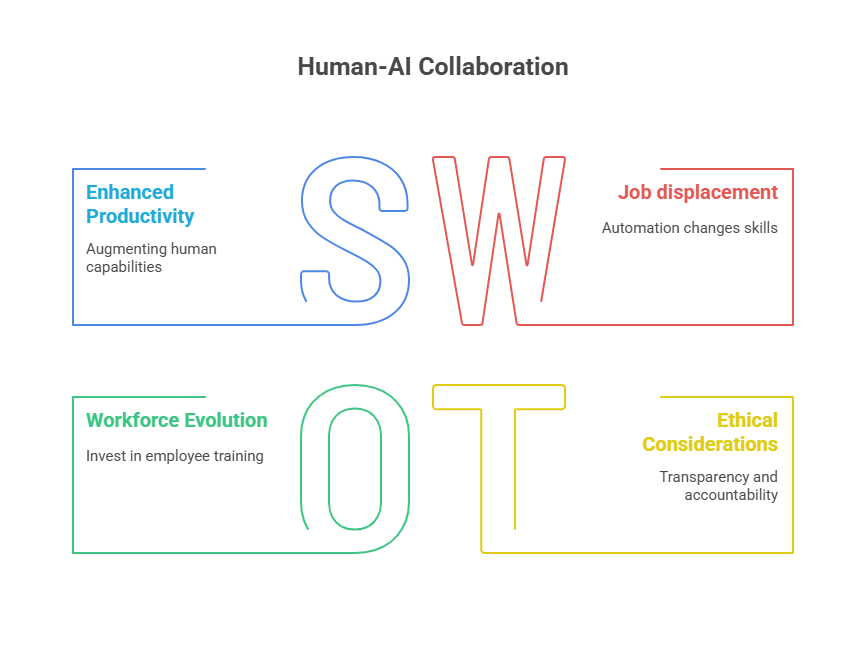
Ethical Considerations and Social Impact
The widespread adoption of intelligent agents brings not only opportunities but also significant ethical questions and social consequences. As AI systems become more autonomous and influential, issues such as privacy, bias, and accountability come to the forefront. Intelligent agents often rely on vast amounts of personal data to function effectively, raising concerns about how this information is collected, stored, and used. Ensuring data security and respecting user privacy are essential to maintaining public trust.
Another challenge is algorithmic bias. If the data used to train intelligent agents reflects existing social inequalities or prejudices, the AI may unintentionally perpetuate or even amplify these biases. This can lead to unfair outcomes in areas like hiring, lending, or law enforcement. Addressing bias requires careful data selection, transparent algorithms, and ongoing monitoring to ensure fairness and inclusivity.
Accountability is also crucial. When intelligent agents make decisions that affect people’s lives, it must be clear who is responsible for those outcomes—the developer, the user, or the organization deploying the AI. Establishing clear guidelines and ethical standards helps ensure that AI is used responsibly and for the benefit of society.
On a broader scale, the social impact of intelligent agents includes changes in the job market, shifts in power dynamics, and new forms of digital interaction. While AI can create new opportunities and improve quality of life, it also requires thoughtful regulation and public dialogue to address potential risks and ensure that the benefits are shared widely.
The Future of Intelligent Agents: Trends and Innovations
Looking ahead, the future of intelligent agents is shaped by rapid technological progress and growing societal expectations. One major trend is the development of more general and adaptable agents, capable of handling a wider range of tasks and learning from fewer examples. Advances in generative AI, such as large language models and multimodal systems, are enabling agents to understand and create not just text, but also images, audio, and video, making them even more versatile.
Another important direction is the rise of collaborative multi-agent systems, where groups of intelligent agents work together—or with humans—to solve complex problems. This approach is already being explored in logistics, disaster response, and scientific research, where coordination and adaptability are key.
Personalization will also continue to advance, with intelligent agents becoming more attuned to individual preferences, habits, and needs. At the same time, there is a growing emphasis on explainability and transparency, as users and regulators demand to understand how AI systems make decisions.
Finally, as intelligent agents become more deeply integrated into society, ethical design and responsible innovation will be at the heart of their development. The future promises not only smarter and more capable agents, but also a greater focus on ensuring that these technologies serve humanity’s best interests.
Conclusion: Embracing the AI-Driven World
The integration of intelligent agents into our world represents a fundamental shift in how we interact with technology and organize our society. As we’ve explored throughout this analysis, these AI systems are not just tools but active participants in shaping our future. Their impact spans across industries, transforms human-machine collaboration, and raises important ethical considerations.
Here’s a simple Python code example demonstrating how an intelligent agent might monitor and adapt to user interactions:
python
import datetime
import pandas as pd
from sklearn.ensemble import RandomForestClassifier
class AdaptiveAgent:
def __init__(self):
self.interaction_history = pd.DataFrame(columns=['timestamp', 'action', 'user_response'])
self.model = RandomForestClassifier()
self.learning_rate = 0.1
def record_interaction(self, action, user_response):
new_interaction = {
'timestamp': datetime.datetime.now(),
'action': action,
'user_response': user_response
}
self.interaction_history = pd.concat([
self.interaction_history,
pd.DataFrame([new_interaction])
])
# Save interaction history to CSV
self.interaction_history.to_csv('interaction_history.csv', index=False)
def learn_from_interactions(self):
if len(self.interaction_history) > 10:
# Simple feature engineering
X = pd.get_dummies(self.interaction_history['action'])
y = self.interaction_history['user_response']
self.model.fit(X, y)
# Example usage
agent = AdaptiveAgent()
agent.record_interaction("suggest_meeting", "accepted")
agent.record_interaction("send_reminder", "ignored")
agent.learn_from_interactions()
# Created/Modified files during execution:
print("Created/Modified files:")
print("- interaction_history.csv")Implementation Guidelines and Best Practices
To successfully implement intelligent agents in any environment, following best practices is crucial. Here’s a Python example showing how to implement basic monitoring and evaluation of an AI agent’s performance:
python
import numpy as np
from datetime import datetime
import json
import logging
class AIAgentMonitor:
def __init__(self):
self.performance_metrics = {
'accuracy': [],
'response_time': [],
'user_satisfaction': []
}
logging.basicConfig(filename='agent_monitoring.log', level=logging.INFO)
def monitor_performance(self, metric_type, value):
self.performance_metrics[metric_type].append(value)
self._save_metrics()
self._log_activity(f"Recorded {metric_type}: {value}")
def _save_metrics(self):
metrics_summary = {
'last_updated': datetime.now().isoformat(),
'metrics': {
k: {
'mean': np.mean(v),
'std': np.std(v) if len(v) > 1 else 0,
'last_value': v[-1] if v else None
} for k, v in self.performance_metrics.items()
}
}
with open('agent_metrics.json', 'w') as f:
json.dump(metrics_summary, f, indent=4)
def _log_activity(self, message):
logging.info(f"{datetime.now()}: {message}")
def get_performance_summary(self):
return {
k: np.mean(v) for k, v in self.performance_metrics.items() if v
}
# Example usage
monitor = AIAgentMonitor()
monitor.monitor_performance('accuracy', 0.95)
monitor.monitor_performance('response_time', 0.2)
monitor.monitor_performance('user_satisfaction', 4.5)
print("Performance Summary:", monitor.get_performance_summary())
# Created/Modified files during execution:
print("\nCreated/Modified files:")
print("- agent_metrics.json")
print("- agent_monitoring.log")These code examples demonstrate practical implementations of monitoring and adaptive learning in AI agents, following key principles of transparency, continuous improvement, and performance tracking. The first example shows how an agent can learn from interactions, while the second provides a framework for monitoring and evaluating AI agent performance – both crucial aspects of successful AI implementation.
From Pull Request to Deployment: AI Agents in the Review Process
Artificial Intelligence in Practice: How to Deploy AI Models in Real-World Projects
